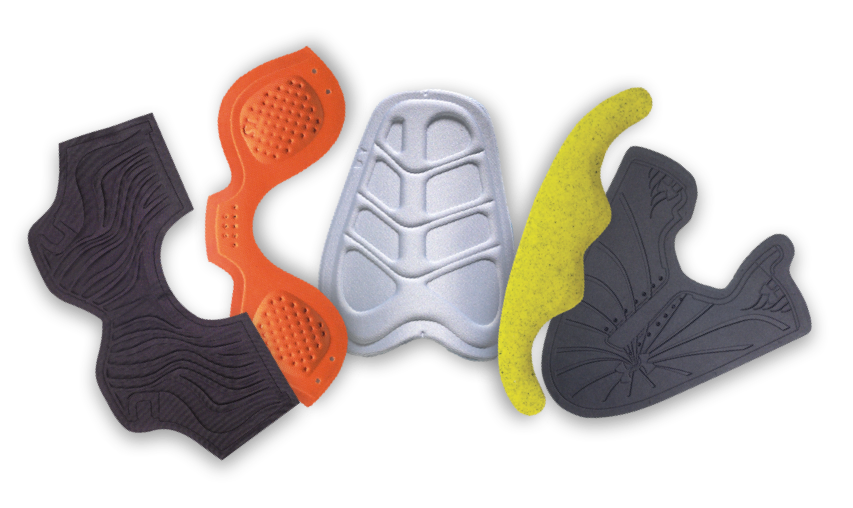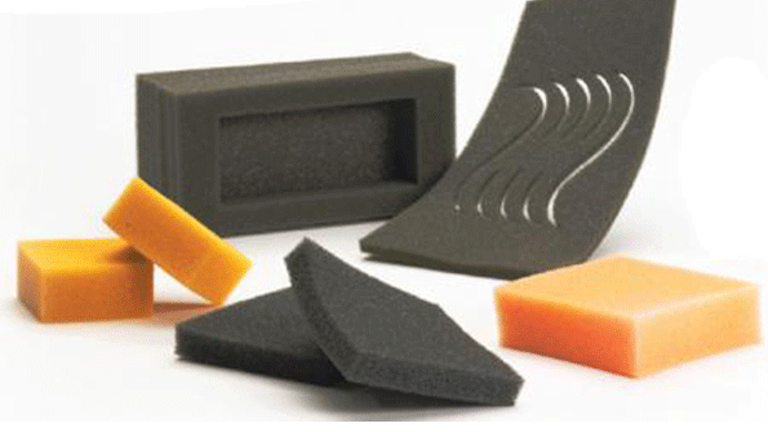Rubber enthusiast > Measure the Hardness of Rubber and Sponge
There are thermometers for measuring temperature, barometers for measuring barometric pressure, and speedometers for cars. So what about measuring the hardness of rubber? The reality is that it doesn’t come out very well. In this special page, we will take up the questions related to such “hardness of rubber” and explain them in an easy-to-understand manner.
Table of Contents
Numbers that Represent Hardness
Hardness is indicated in the names of products sold by Gomutsu and the specifications of the products. For example, “hardness 65” is that, but even if you say the hardness numerically, it doesn’t come out immediately. Therefore, we have prepared a comparison table so that you can easily imagine the hardness. Please refer to the figure on the lower left. According to this table, “hardness 65” is about the hardness of a tire. In addition, the measurement method and standard differ depending on whether the object to be measured is rubber or sponge. In the case of sponge, it will be as shown in the lower right.
As you can see, how hard (softness) is rubber and sponge when the ticking state is 100? It seems that the idea is an index for measurement. (The question arises as to what a tick is, but please go through it.) In order to deepen our understanding, we must touch on a measuring instrument that measures the hardness of rubber. Please read the following “How to measure hardness“.

How to Measure Hardn#ess
How do you measure the hardness of rubber? Mostly, a hardness tester called a “durometer” is used. This is how the durometer works. There are things like “needle” and “wart” under which a certain force is applied (if the object to measure hardness is rubber, it is “needle”, and if it is a soft material such as sponge or gel, it is “needle”. Warts “). Hardness is expressed by pressing it against rubber or sponge and numerically indicating how much they sink. As mentioned above, rubber and sponge have different measurement standards, but the difference seems to have a lot to do with the shape of the measurement unit. (See video)
Introducing a Sample
It’s hard to understand until you actually get the material. We also offer free samples of 24 types of typical rubber and sponge materials.Click here for a free sample
There is an Error in the Notation of Hardness
The above-mentioned usage of the durometer has rules for measuring such as the thickness of the test piece (6 mm or more) and the test environment (temperature 23 ± 2 degrees, humidity 50 ± 5%). Obviously, this is to measure the hardness properly. Then, it seems that there should be not much error in the notation of rubber hardness. However, the hardness value on the catalog and product description page shows a margin of error such as “± 5” indicated by the manufacturer. In fact, in the case of a flexible material such as rubber, it seems unavoidable that there is some variation in hardness, and it seems that it is acceptable within the industry.
Notice (Disclaimer)
This page is not intended to detail accurate and scientific information or to provide numerical data. It is just a guideline. The information posted on this page and the content of the linked videos were independently investigated and implemented by the creator, Fuso Rubber Industry Co., Ltd. Rubber Communication Division (hereinafter referred to as “creator”). The range of use, performance, etc. are not guaranteed values. Therefore, it is the user’s own responsibility to judge whether or not it is suitable for the purpose of use, use, conditions, etc. The user is responsible for any danger or problem caused by using the information on this page. The creator cannot take any responsibility. For detailed specifications of individual products, please be sure to contact the manufacturer of each product directly.





